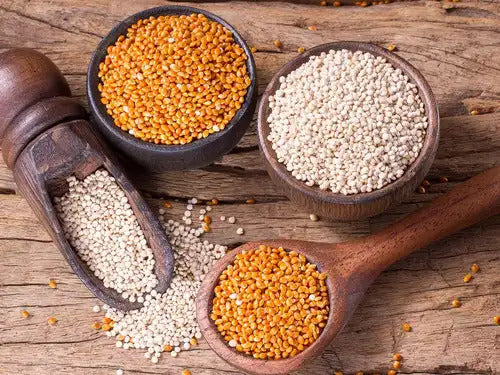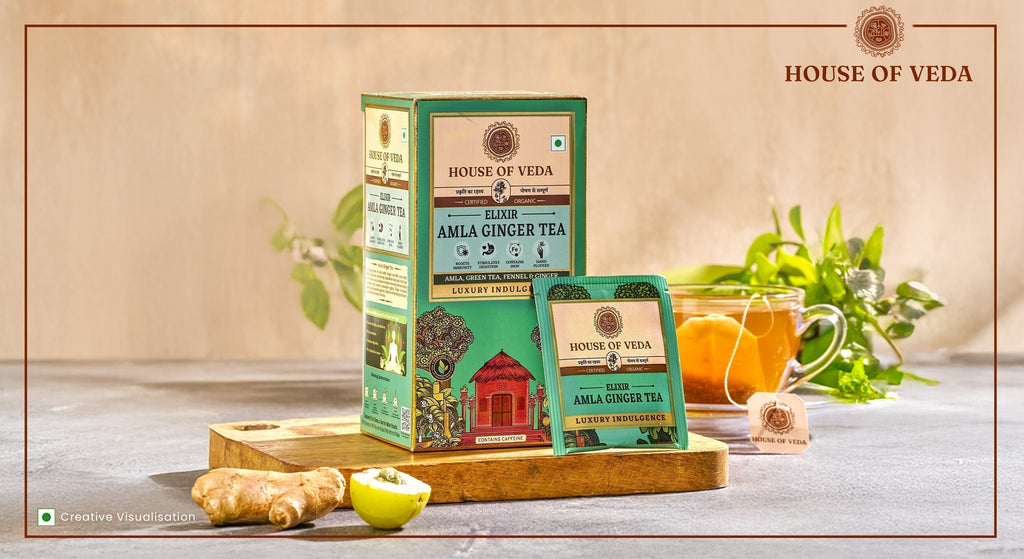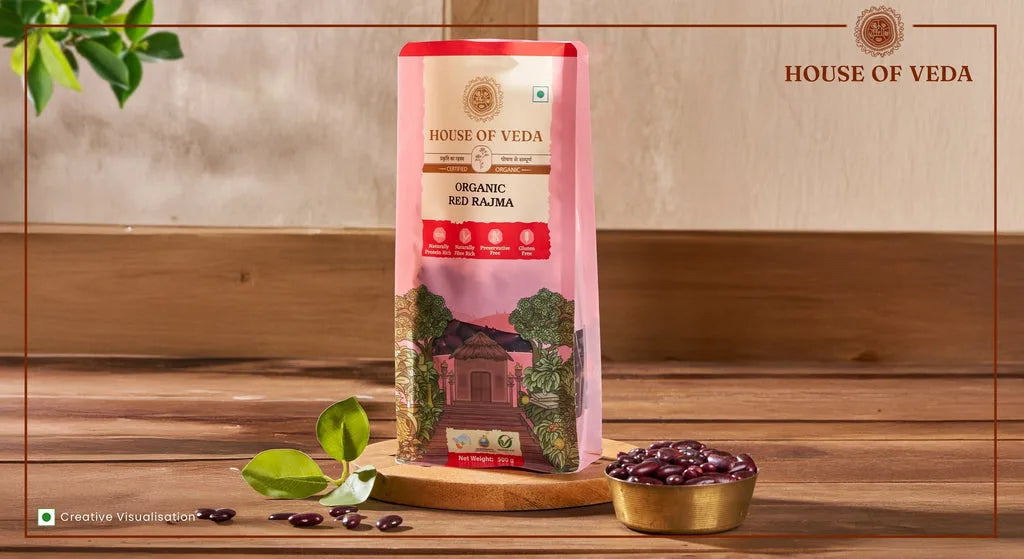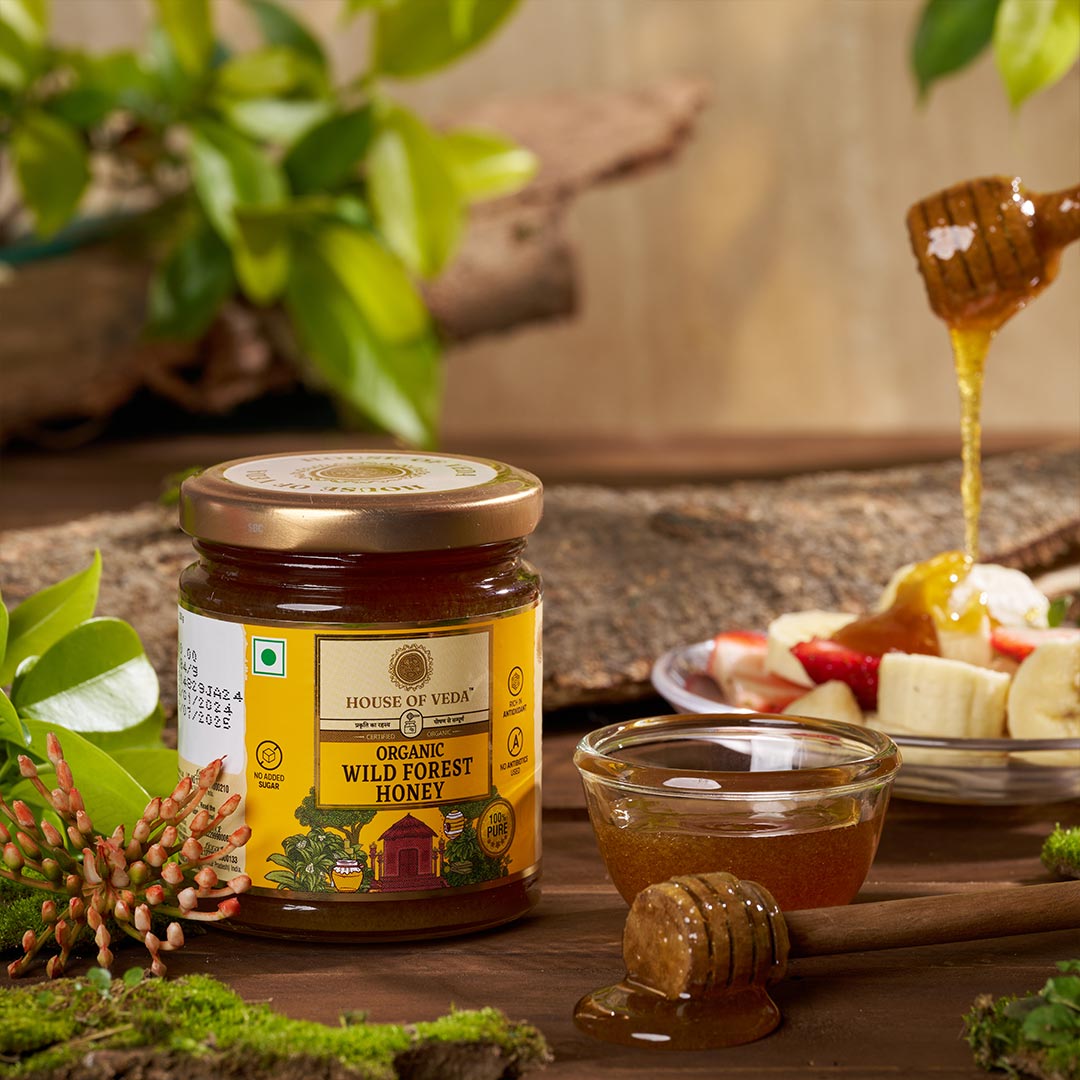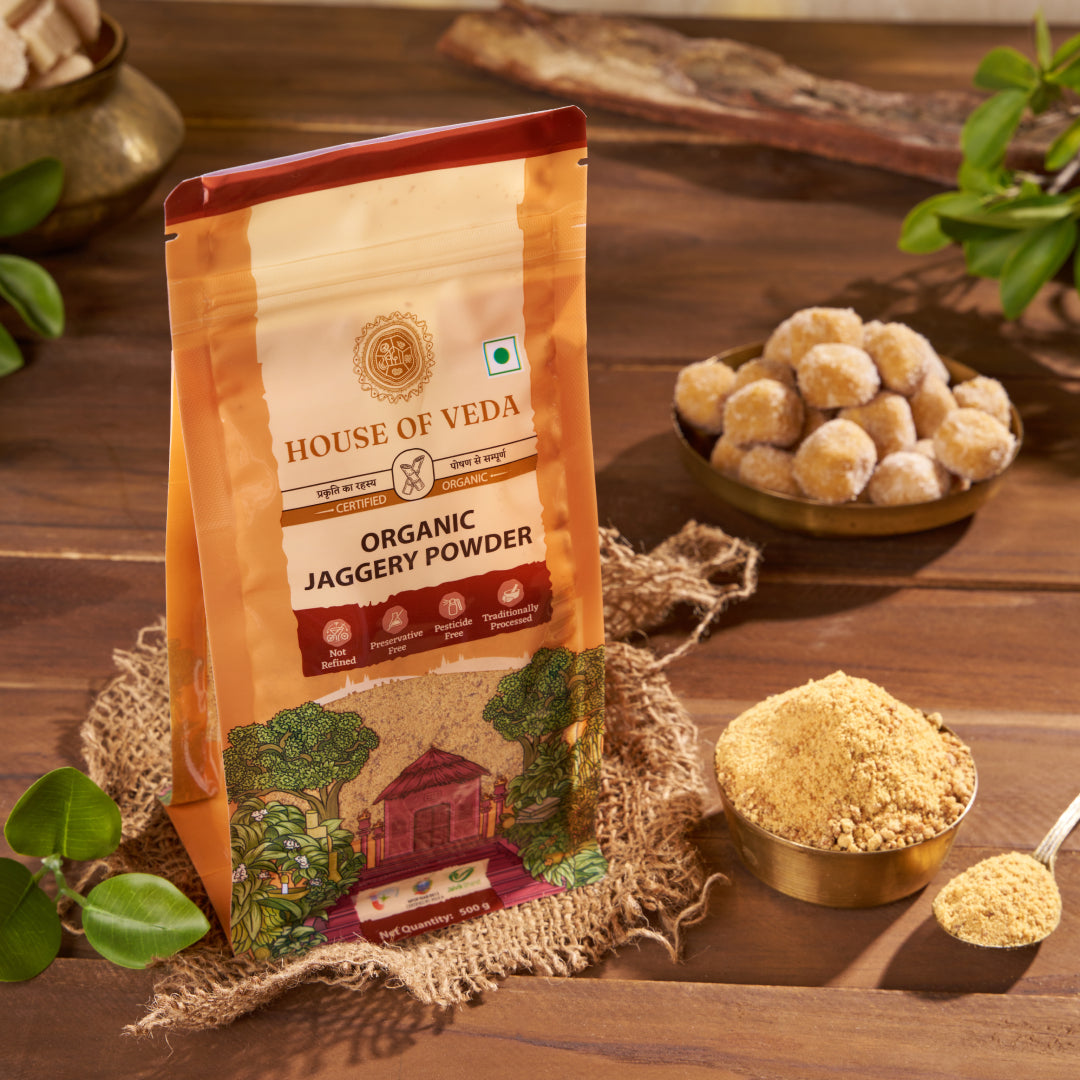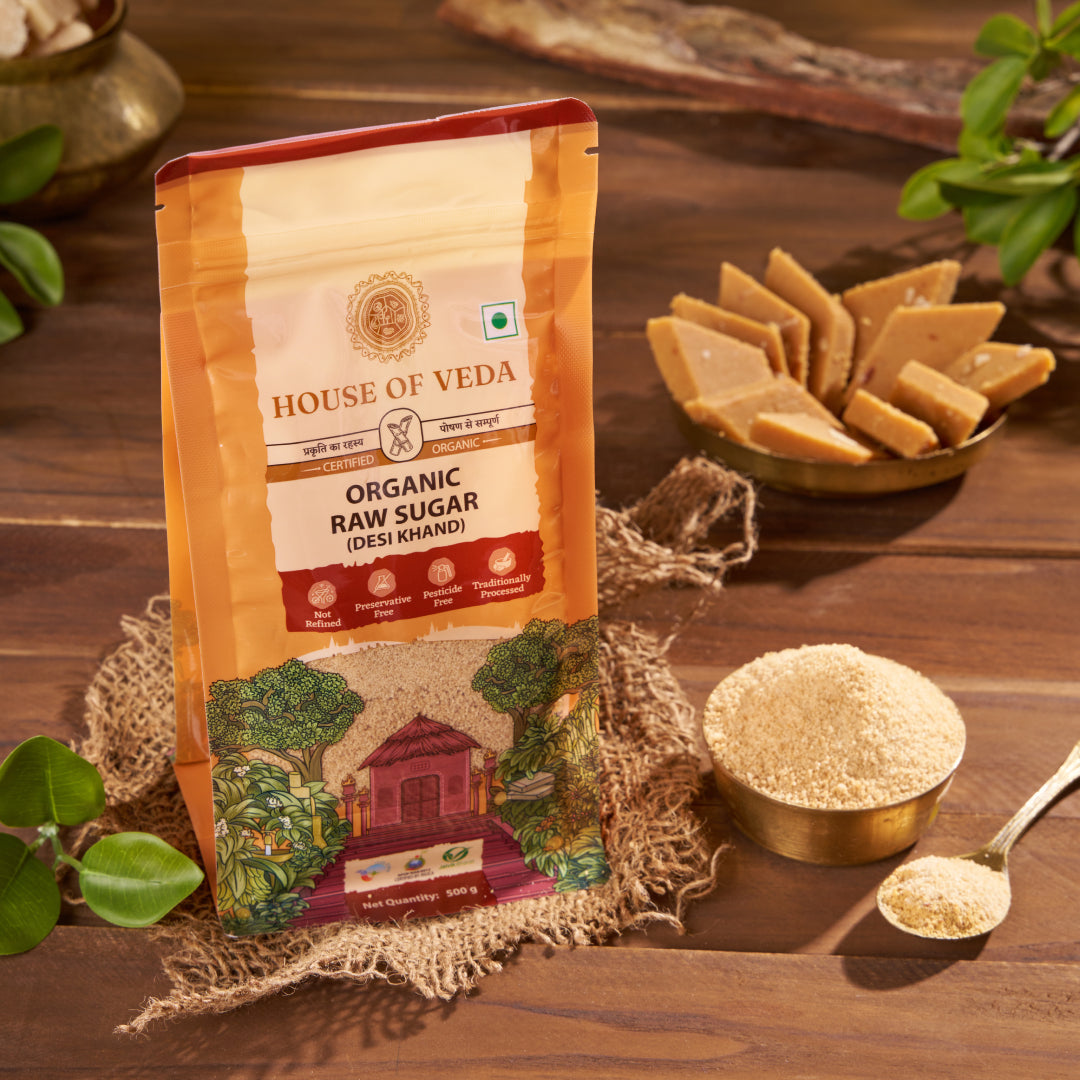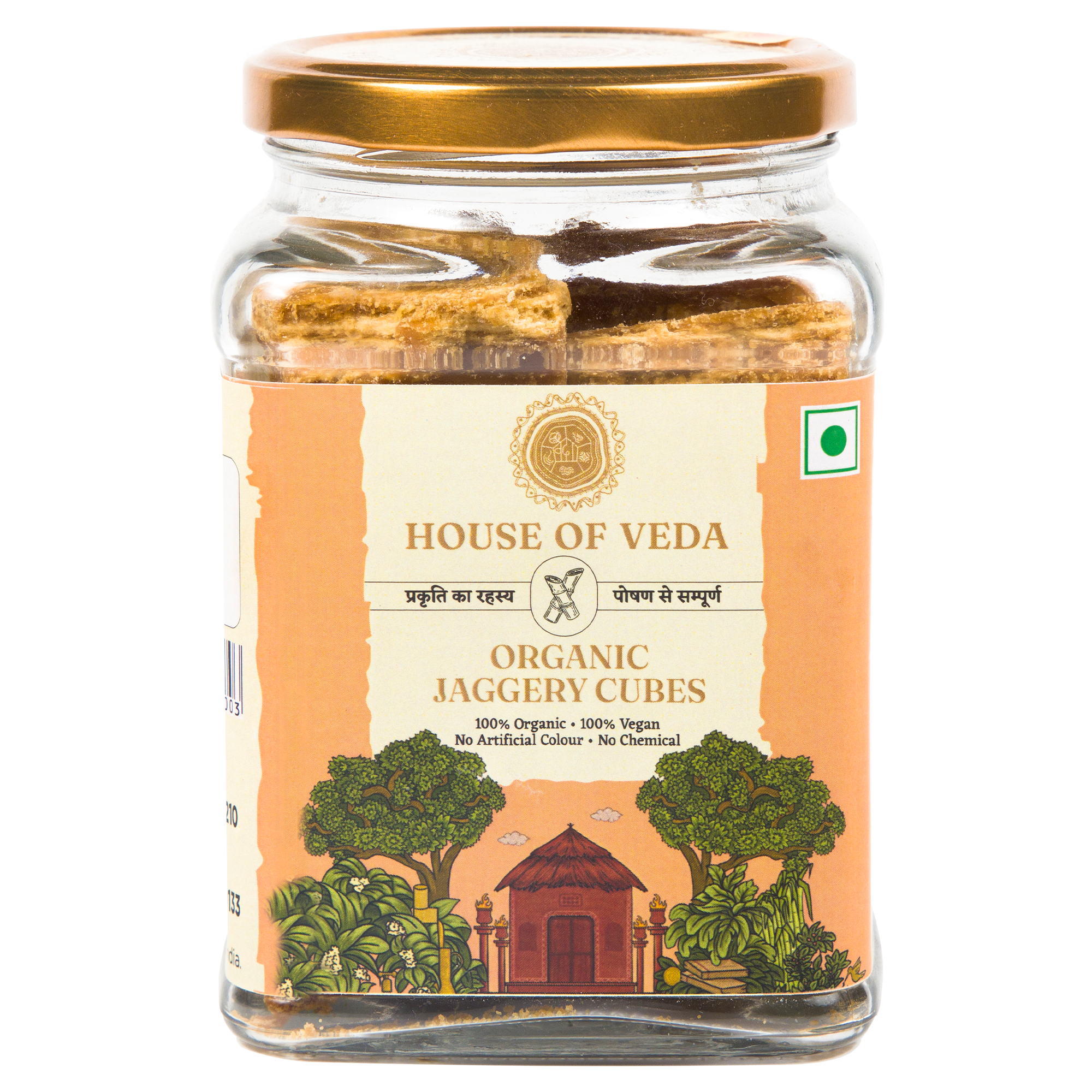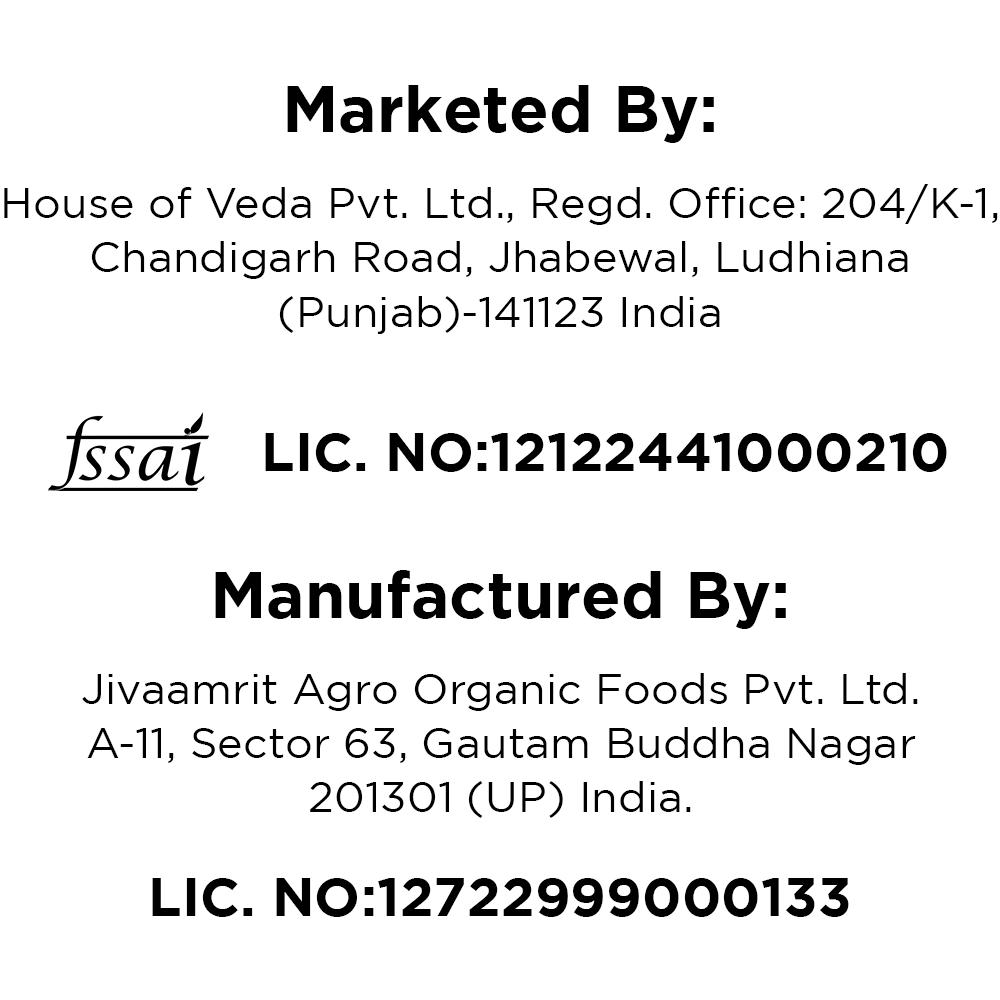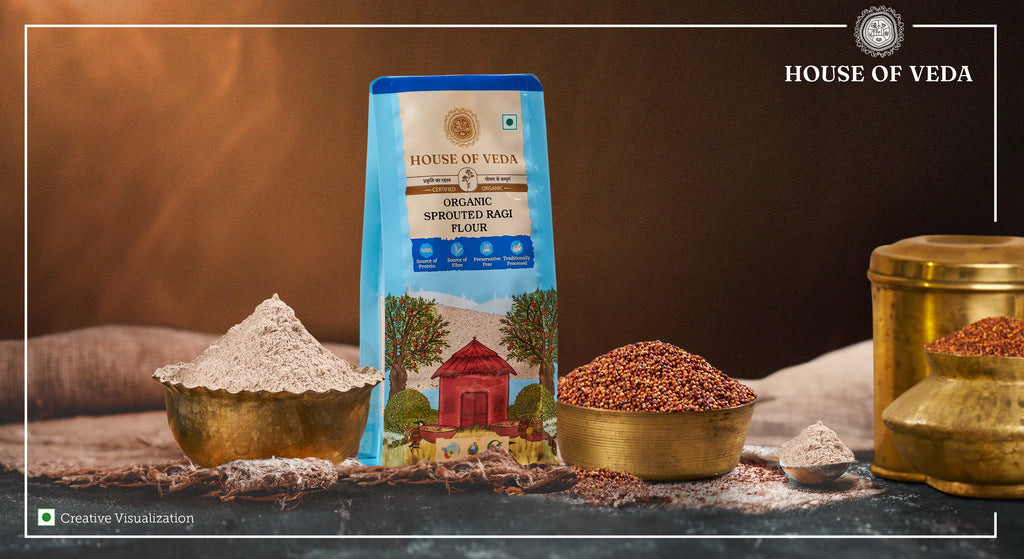
Ragi Benefits and Recipes: Unlocking Finger Millet's Potential

Ragi stands out among millets for its unique nutritive profile and culinary versatility. It's gluten-free, making it an excellent choice for those with celiac complaints or gluten intolerance. Moreover, ragi has a high calcium content, dietary fibre, and natural antioxidants, which help promote several health benefits. It can satiate hunger and give sustained energy, making it a favorite choice for people looking to manage weight.
Ragi kinds and Their nutritive Differences
Ragi is available in different forms, similar to whole grains, flour, and flakes, each with its own set of nutritive benefits. Whole-grain ragi is rich in fibre and retains the utmost of its nutrients, while ragi flour is finely based for use in a variety of uses. The nutritive differences are minor but significant, with reused forms like flour slightly reducing its dietary fibre. However, all forms of ragi are rich in several essential minerals and vitamins, best for all dietary requirements.
Essential Amino Acids in Ragi and Their Health Benefits
Ragi is a rare vegetarian source of essential amino acids similar to methionine, isoleucine, and tryptophan, which play pivotal places in maintaining muscle health, skin health, and overall metabolic functions. Methionine helps in fat metabolism and liver health, while tryptophan promotes relaxation and better sleep. Including ragi in your diet ensures that you are getting these essential nutrients in your diets.
Exploring the Health Benefits of Ragi

You will be amazed to see the health benefits of this super grain. Below are some of the benefits:
1.Ragi Supports in Weight Loss and Satiety
Ragi is a rich source of dietary fibre, which aids digestion and keeps you full for a long. This helps check unhealthy snacking and promotes controlled calorie input, making it an effective addition to weight-loss diets. Also, ragi's slow-digesting carbohydrates give sustained energy, precluding spikes in hunger pangs throughout the day.
You can use House of Veda Organic & Sprouted ragi flour to make ragi roti which supports weight loss as it’s a whole grain with high fibre and protein. Experts also recommend having 2-3 rotis made of ragi flour as a part of a balanced diet for weight management. Another recommendation is to consume ragi in small frequent meals instead of large infrequent meals to get desired results.
2.Ragi’s Benefits for Blood Sugar Control in Diabetics
People with diabetes keep on looking for certain food options that can impact their blood sugar levels. With a low glycemic index, ragi ensures a slow and steady release of glucose into the bloodstream which avoids unforeseen spikes in blood sugar. This property makes it a diabetic-friendly grain, helping manage blood sugar situations effectively if the consumption is done in moderation.
According to experts, ragi is a great diet option for people with diabetes as it may improve their cholesterol and blood sugar levels. And one of the easiest ways to consume it is in the form of rotis. Try House of Veda organic ragi flour to make fibre-rich rotis and enjoy it with any of your favourite vegetables or dal.
3.Ragi is Good for the Skin and Hair
Rich in antioxidants like polyphenols, ragi combats oxidative stress, reducing signs of growing similar as wrinkles and fine lines.Its high protein and mineral content also contribute to healthy, strong hair.Regular addition of ragi in the form of flour or cereal in your diet can affect in glowing skin and lustrous hair.
5.Ragi and Heart Health Benefits
The presence of lecithin and methionine in ragi aids in reducing LDL (bad cholesterol) situations, guarding highways and lowering the threat of heart conditions. also, its fiber content helps in managing cholesterol situations, promoting overall cardiovascular health.
6.Ragi’s role in preventing Osteoporosis and Strengthening Bones
Ragi is known to be the highest non-dairy source of calcium that makes it highly beneficial for bone health. Consuming ragi regularly strengthens bones and prevents conditions like osteoporosis, especially in children, senior grown-ups, and post-menopausal women.
7.Benefits of Ragi for gestation and Lactation
Ragi provides essential nutrients like iron, calcium, and folic acid, supporting the health of both mama and baby during gestation. For lactating maters , ragi is known to enhance milk product while perfecting its nutritive quality.
8.How Ragi Can Help Combat Anemia
As a natural source of iron, ragi is salutary in precluding and treating anemia. Consuming ragi with vitamin C-rich foods like citrus fruits or tomatoes enhances iron immersion, perfecting hemoglobin situations.
9.How Does Ragi Support Bone Health?
With over 344 mg of calcium per 100 grams, ragi is a hustler for bone health. It strengthens bones, aids in dental health, and is particularly salutary during childhood growth and aging when bone viscosity frequently declines.
10.Ragi is Good for Overall Wellness
Rich in iron, zinc, and other micronutrients, ragi plays a significant part in strengthening the vulnerable system. Its combination of vitamins and minerals ensures that the body has the coffers to fight infections and recover briskly from ails.
Side- effects of Eating Ragi
Despite its several benefits, inordinate consumption of ragi can lead to certain side effects. Its high oxalate content may lead to kidney stone conformation in predisposed individuals. Ragi when consumed in excess can also cause digestive issues like constipation, especially when not accompanied by acceptable hydration. Preparing it properly and consuming it in moderation is essential.
Ragi vs. Wheat A Nutritional Comparison

Ragi (finger millet) and wheat are staple grains in numerous diets, each providing unique nutritive benefits. still, their nutrient composition varies significantly, making them suitable for different dietary requirements.
1.Calorie Content and Energy
Wheat is slightly advanced in calories than ragi, furnishing further energy per gram. This makes wheat an excellent option for individualities taking a calorie- thick diet, similar as athletes or those with high exertion situations. Ragi, on the other hand, is a lower- calorie option, ideal for weight operation.
2.Protein Content
Both grains are rich in protein, but wheat has a slight edge, making it a favored choice for those fastening on muscle form and growth. Ragi compensates with the presence of essential amino acids like methionine, which are absent in wheat, contributing to better overall protein quality.
3.Fiber Content
Ragi is significantly advanced in salutary fibre than wheat, promoting better digestion and precluding constipation. Its high fiber content also helps regulate blood sugar situations, making it a better choice for diabetics.
4.Calcium and Micronutrients
Ragi is a hustler of calcium, offering ten times further than wheat. This makes it an excellent grain for bone health and precluding conditions like osteoporosis. also, ragi is rich in iron, magnesium, and phosphorus, while wheat provides advanced situations of zinc and selenium.
Ragi Recipes for Every Occasion

Ragi is a versatile grain that fits seamlessly into a variety of dishes, making it ideal for any meal or celebration. Its earthy flavor and nutrient-dense profile ensure that every bite is both delicious and healthy. Here are some innovative and traditional ragi recipes you can try, along with tips for preparation and serving:
1. Ragi Dosa: The Protein-Rich Pancake
Ragi dosa is a South Indian favorite, perfect for breakfast or dinner. The batter is made by fermenting a mix of ragi flour, rice flour, and urad dal, which gives it a tangy and spongy texture. You can enhance the flavor by adding finely chopped onions, green chilies, and curry leaves. Serve it with coconut chutney and sambar for a wholesome meal.
Pro Tip: To save time, you can prepare an instant version by skipping fermentation and mixing the flour with curd and water.
2. Ragi Porridge: A Nutrient-Packed Breakfast
Ragi porridge, known as "ragi java," is a go-to for kids and adults alike. Sweetened with jaggery and flavored with cardamom, it makes a comforting breakfast. For a savory twist, you can prepare a salt-and-buttermilk version with tempered spices like mustard seeds, curry leaves, and green chilies.
Pro Tip: Add mashed banana or chopped dry fruits for added nutrition in the sweet version.
3. Ragi Ladoos: Energy Bites with a Sweet Twist
Ragi ladoos are a festive treat as well as a healthy snack. Made by dry roasting ragi flour, mixing it with ghee, coconut, and jaggery, these ladoos are rich in iron and calcium. Their chewy texture and nutty sweetness make them a favorite among kids.
Pro Tip: Add powdered almonds or cashews for an extra protein boost.
4. Ragi Roti: A Gluten-Free Bread Alternative
Ragi roti is a simple yet nutritious flatbread that pairs perfectly with curries, chutneys, or even a dollop of ghee. The dough is made by mixing ragi flour with warm water and a pinch of salt. Knead it gently and roll out thin rotis for even cooking. This is a staple in many South Indian households.
Pro Tip: Add finely grated carrots, spinach, or methi leaves to the dough for added flavor and nutrition.
5. Ragi Upma: A Savory Delight
Ragi upma is a wholesome twist on the traditional semolina upma. Ragi semolina is roasted and cooked with a tempered mix of mustard seeds, curry leaves, and chopped vegetables like carrots, peas, and beans. Its nutty flavor combined with the crunch of fresh vegetables makes it a hearty dish.
Pro Tip: Squeeze some lime juice on top and garnish with coriander for a tangy finish.
6. Ragi Malt: A Hydrating and Energizing Drink
Ragi malt is a nourishing drink that can be enjoyed either sweet or savory. For the sweet version, cook ragi flour in water, sweeten with jaggery, and mix with milk. The savory version uses buttermilk and salt, often consumed as a hydrating summer drink.
Pro Tip: For an extra dose of health, add a pinch of dry ginger powder to the sweet version.
7. Ragi Halwa: A Festive Dessert
Ragi halwa is a delicious way to celebrate special occasions while keeping it healthy. This dessert is prepared by cooking ragi flour in ghee and milk, sweetened with jaggery or sugar, and flavored with cardamom. Garnish with chopped nuts like almonds and pistachios for a touch of luxury.
Pro Tip: Use coconut milk instead of regular milk for a vegan and flavorful alternative.
8. Ragi Pakoras: A Crunchy Snack
For a unique twist on traditional pakoras, use ragi flour as the base. Mix it with chickpea flour, spices, and chopped vegetables like onions, spinach, or cabbage. Deep fry until crispy and serve hot with mint chutney or ketchup.
Pro Tip: For a healthier option, use an air fryer instead of deep-frying.
9. Ragi Idli: A Healthy Breakfast Staple
Ragi idli is a soft and fluffy steamed dish made by fermenting a mixture of ragi flour and urad dal batter. These idlis are perfect for a low-calorie, nutrient-rich breakfast or dinner. Pair with tangy tomato chutney and vegetable sambar for a classic combination.
Pro Tip: Adding a handful of grated carrots or steamed spinach to the batter can enhance both taste and nutrition.
10. Ragi Cookies: A Healthy Treat
Ragi cookies are perfect for those who love baked goods but want to avoid refined flour. Made with ragi flour, jaggery, butter, and a dash of cinnamon, these cookies are crunchy, mildly sweet, and great as an on-the-go snack.
Pro Tip: Add dark chocolate chips(sugar free) or raisins for a touch of indulgence.
Conclusion
Ragi, often celebrated as a super grain, offers a unique combination of taste, versatility, and unparalleled health benefits. From aiding weight management and improving bone health to supporting skin, hair, and overall wellness, its nutrient-rich profile makes it a standout choice for a balanced diet. Whether incorporated into everyday meals, festive desserts, or healthy snacks, ragi adapts effortlessly to diverse culinary creations.
With options like House of Veda Organic & Sprouted Ragi Flour, you can ensure the highest quality and nutrition in every dish. Embrace ragi as a key part of your lifestyle, not just for its health benefits but also for its ability to transform simple recipes into wholesome, flavorful meals. Explore these recipes and reap the rewards of this ancient grain for a healthier, happier life!
FAQs About Ragi
1.Is Ragi the Same as Nachni?
Yes, ragi and nachni refer to the same finger millet grain.
2.Is Ragi Suitable for a Low-Carb Diet?
Ragi is relatively higher in carbohydrates but is balanced by its fiber and protein.
3.Does Cooking Ragi Affect Its Nutritional Value?
Cooking enhances its digestibility without significantly reducing its nutrients.
4.Can Ragi Be Harmful if Eaten in Large Quantities?
Excessive consumption can lead to issues like kidney stones due to oxalates.
5.Is Ragi Safe for People with Thyroid Conditions?
Moderation is advised for thyroid patients due to its goitrogenic properties.
6.Is Ragi Gluten-Free?
Yes, ragi is completely gluten-free.
7.Can Ragi Cause Constipation?
Ragi’s high fiber content generally prevents constipation unless overconsumed.
8.Is Ragi Safe for Babies?
Yes, ragi is a nutritious food for babies, promoting growth and development.
"The House of Veda stands by the V-E-D-A principles. Every blog we write and every product we offer is built on Verified Experience and Expertise. We are committed to Dependability and Authenticity, ensuring that our community receives nothing but the best in organic wellness."
"V-E-D-A" (Experience, Dependability, Authority, and Authenticity)


